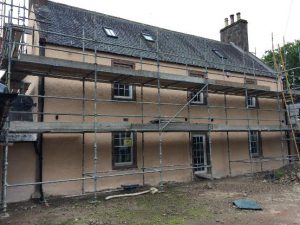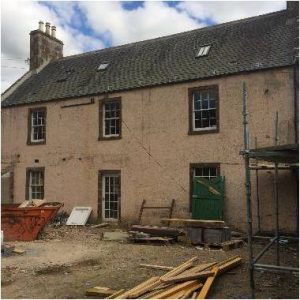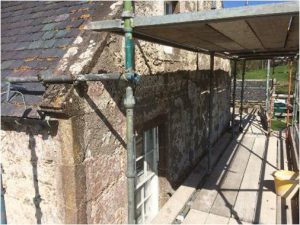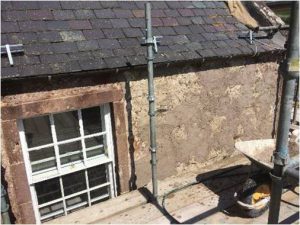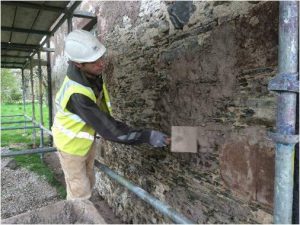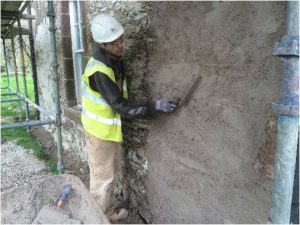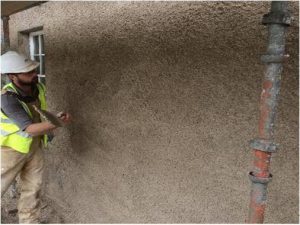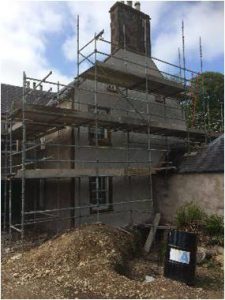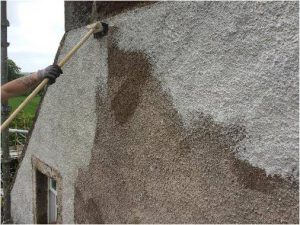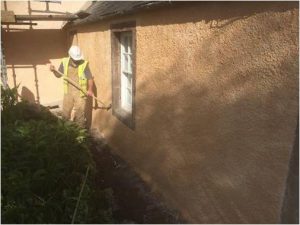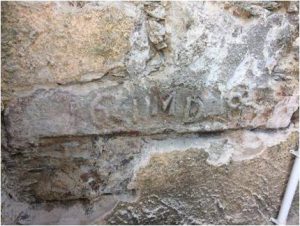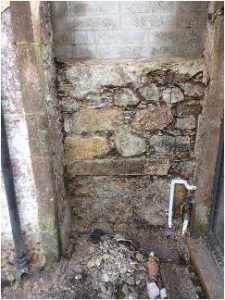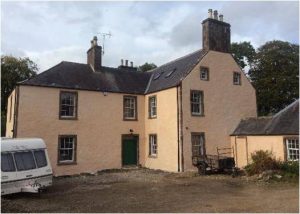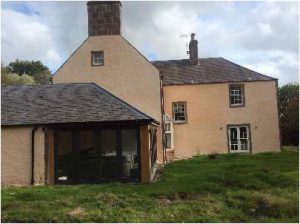Client:
Private
Background Information
Harper & Allan Masonry Ltd were contracted in on March 2016 by Stewart Wilson Joinery Ltd to undertake external repairs to the former Manse at Forglen near Turriff.
The building is B listed with the original part dating as far back as 1683 with later additions in 1792 and 1830. Kirkland’s House was a former manse to the old church of Forglen which lies as a ruin to the West of the property.

Scope of Works
Kirklands is build from a mixture of red sandstone surrounds and whinstone rubble infill. There have been many alterations to openings over the years thus leading to various areas impervious cement render patching. During the current refurbishment works there had also been alterations to openings. The decision was taken to remove all harling and recoat in traditional lime harling
Removal of Old Harling
The old defective harling and cement render was removed by hand until good sound lime mortar had been reached on the substrate background. After removal many areas patched in with concrete blocks were exposed and vast areas where redundant services and vents entered the property.
Dubbing Out
After the substrate has been prepped by removal of old harling and washed down to remove all loose materials the process of dubbing out was undertaken. This included building up areas where former services entered the building, pinning out larger voids and applying mortar flush with the masonry surface
Pricking Up/Straightening Coat
Hand cast straightening coat applied to give a more even finish across the wall. Once cast onto the wall the mortar is trowelled from high point into low taking care not to over trowl the mortar
Finish Coat
Traditional hand cast harling undertaken to all elevations feathered in at all edges and surrounds
Limewash x 3 coats
Limewash was mixed by slaking of quicklime to a ‘double cream’ consistency and applying hot onto the harled surface.
Lime Paint x 2 coats
2 coats of St Asiter lime paint then applied and burnished into surface
Date Stone
During harling removal works a date stone from the original build was found at the lower Eastern elevation with the date 1693. The remainder of harling was delicately removed from the area immediately surrounding this and the stone has now been left exposed with new harling feathered up to and around it

